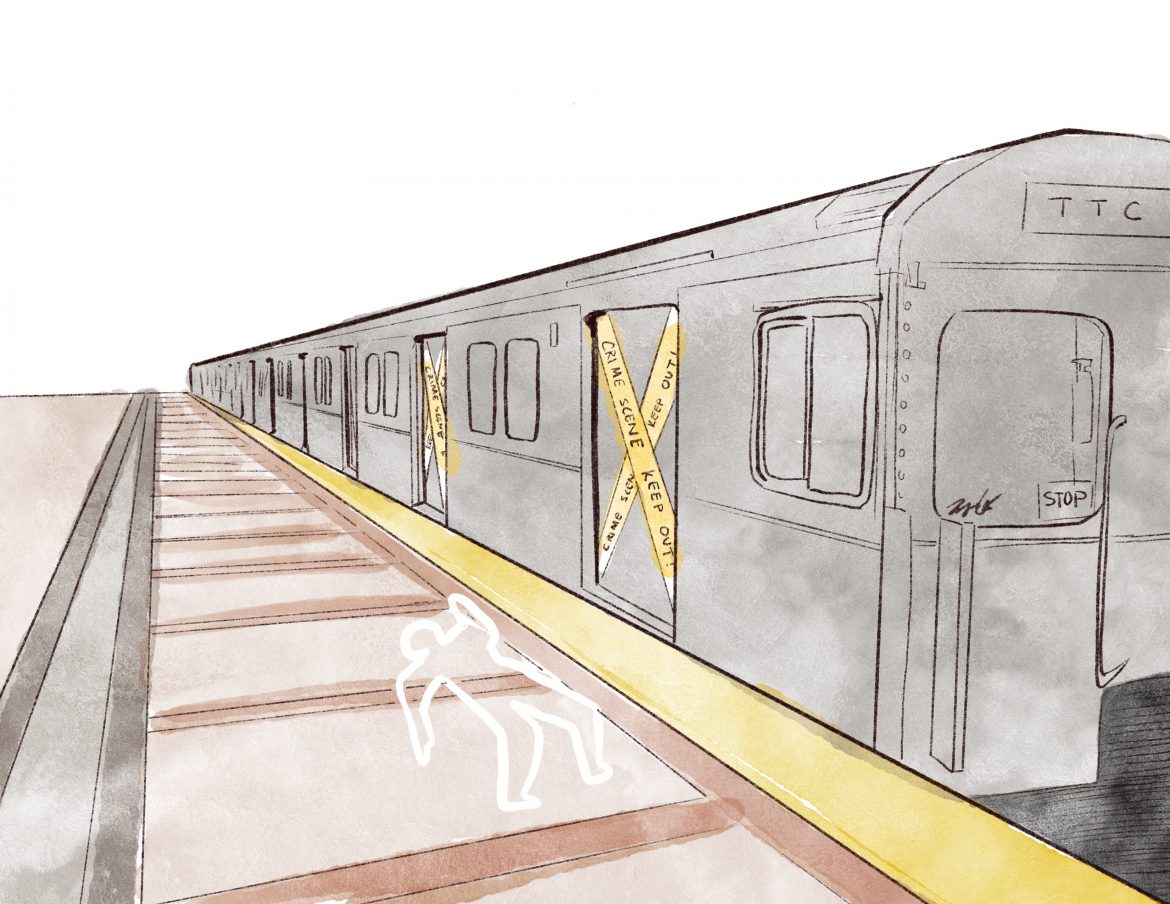Illustration Credit: Joyce Qiu, Illustration Editor
What can the TTC do right?
Victor Buklis, Editor-at-Large
Riding the subway of late has convinced me: the TTC can hardly do anything right.
On one hand, experience speaks to this. The vast majority of my recent transit trips have featured some kind of service disruption. Alarm activated on a northbound train at Sheppard station? The southbound trains at Rosedale stop. Passenger at track level in Vaughan? The entire Yonge line stops. Three minutes until the next train? Try seven. Add seemingly random, unexplained stops in between stations, no shortage of inconsiderate passengers, and the air of danger hanging over Bloor-Yonge station after the evening rush, and you start to approximate the feeling of riding along Toronto’s subway.
It’s a terrible experience. That is the only way to describe riding the TTC. And there is good reason to notice an air of danger covering our transit system: high-profile transit crime is up — a lot. Global News on January 26th wrote, “Over the past nine days, there have been at least 11 violent or criminal incidents reported involving the TTC.” Some such incidents are especially unsettling. U of T students might take notice, for instance, of the January 24th stabbing of a first-year architecture student on the Spadina streetcar line. Or there is the disturbing January 25th incident of TTC workers chased through Dundas station with a syringe.
But someone might object that today’s TTC is nowhere near as dangerous as the New York City subways of the 1970s and 80s. For now, this is true. Toronto’s transit problems, however, are going in the wrong direction — precisely that of the famously graffiti-ridden trains of yesterday’s Big Apple. Moreover, transit is a public service. Average citizens should not seriously wonder, on a regular basis, whether they will be victims of crimes once they pass through the subway turnstiles. People should be eternally vigilant, and there is no question about that. But they should not be fearful. If they are, then public transit is no service at all.
Where has the recent TTC crime wave come from? It’s not the whole story, but the pandemic seems like one obvious source, given how it isolated people from each other and weakened our collective social skills. Now that we’re more or less back to normal, lots of us have forgotten how to behave in public spaces. Add weakened social skills (less inclination to communicate with others, for example) to the general unmannerly behaviour so common on the TTC, and it’s no mystery that crime is up.
Thankfully, there is some cause for hope in this story. For one, there will be more police — 80 officers per day, to be precise — on the TTC in the coming months. This is a good start to restoring order in our transit system, but there should be more comprehensive solutions in the future. One might be installing plexiglass barriers in front of the train platforms. Then there would be no danger of getting pushed onto the tracks, and no more disruptions due to passengers at track level. Another solution: hold TTC workers accountable for providing good service. Make them sign a contract agreeing to provide good customer service, and reward those who do this best.
One further solution involves the P word: privatization. It is wishful thinking to imagine that the TTC’s current public bureaucracy has the necessary incentives to implement swift and service-oriented reforms. Make the TTC more accountable to the people by making it a private company; it’ll go out of business, to be replaced by a better company, if people are unsatisfied. And to those skeptical: would you rather have a (public) TTC that raises fares while cutting service, or a transit company that would respond to your concerns and work to earn your business?




